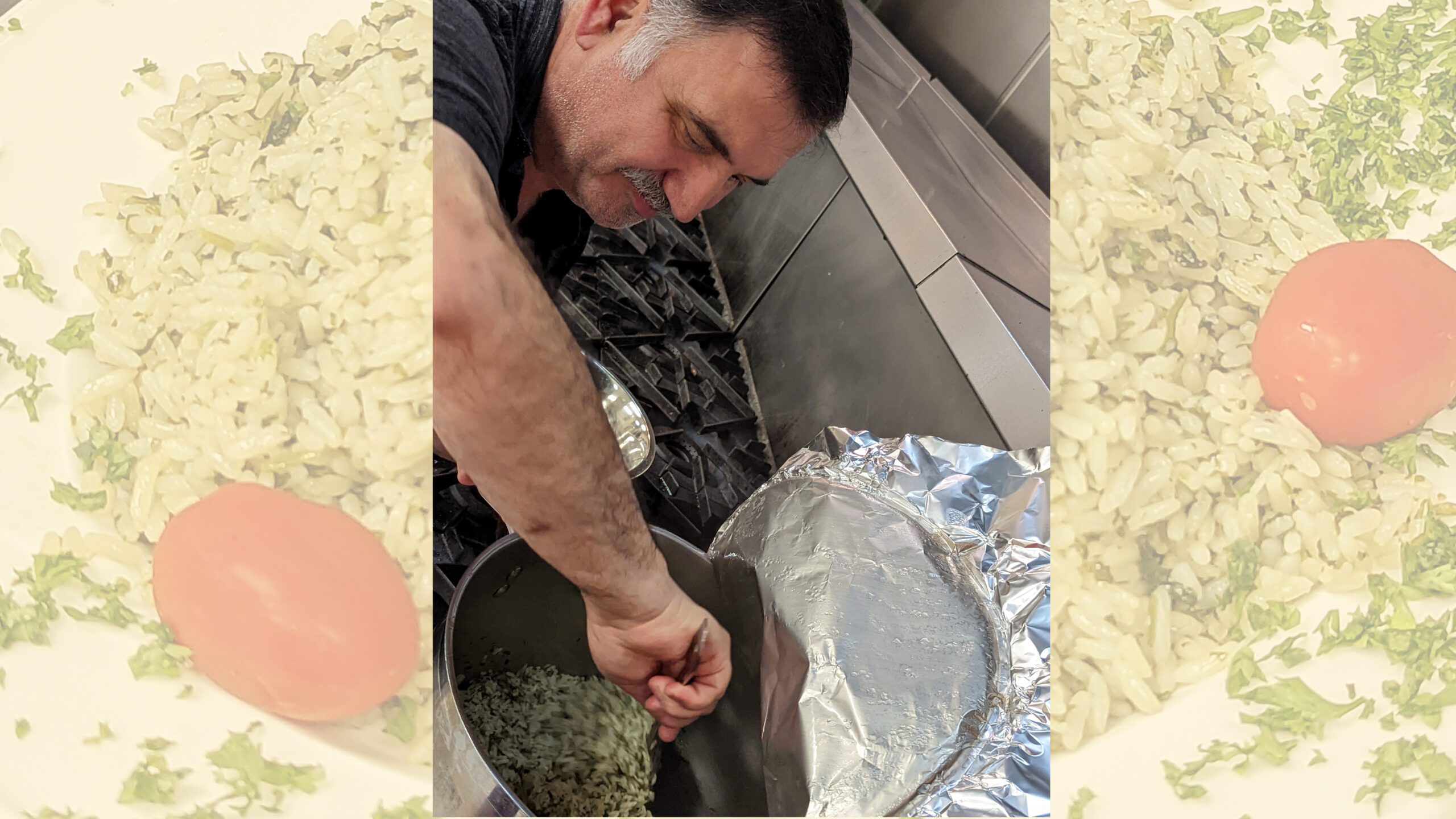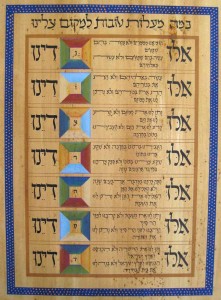The seders of my adult life are quite different than those I experienced in my youth. The main reason for this is that I am married to a Moroccan Israeli who has his own rich traditions from which to draw from. Early in our marriage, my husband experienced his first Ashkenazic seders at my parents’ home. However, once we decided that we were ready to host our own seders, we happily merged customs from both of our backgrounds to create our special family experience.
Perhaps the most unique Moroccan custom of our seder occurs early on when the head of the household (in my husband’s family his mother would do this), holds the seder plate over the head of each attendee separately and chants the following, “Bibhilu yatṣanu mi–miṣrayim, halacḥma ‘anya bené ḥorin.” This roughly translates to the following: “In haste, we went out of Egypt with our bread of affliction and now we are free.” I have taken on this unusual ritual which has become one of the highlights of our seder. Our Ashkenazic friends love this tradition, and with a glass seder plate it is even more entertaining!
One interesting take on this ritual is that is it connected to Kabbalah. It is believed that Rabbi Isaac Luria, who is known for revolutionizing the study of Jewish mysticism through Kabbalah, connected the various items of the seder to the 10 kabbalistic sefirot (mystical dimensions which described the divine attributes of God) and so the seder plate became a sacred symbol of God. In this sense, when raising the seder plate, one is being blessed by the Shekhina (The Talmud defines the Shekhina as the Divine which lives within the world, on earth with the Jewish people and accompanies them when they are exiled), in addition to enjoying the Shekhina’s presence at your seder table.)
Another interesting difference is the ritual accompanying the recitation of the 10 plagues. Instead of the Ashkenazic finger dipping or knife dipping, Moroccans have a different approach. They fill a large bowl with both water and wine (two different glasses pour the liquids into the bowl as each plague is recited). The idea here is that one can see the effect of the first plague as the Egyptians witnessed their precious Nile River become contaminated with blood.
Perhaps the biggest misconception when it comes to Sephardic Jews is that all Sephardic Jews eat rice on Pesach (Passover). Like anything else in Judaism, there are a myriad of customs and traditions depending on where your family lived in the old country or even from where they originated generations before they ended up in that particular city. Moroccan Jews, for example, are a diverse group with different customs depending on their ancestry. There are those that came after the destruction of the First Temple in Jerusalem and settled among the Berbers. There are also those who came in 1492 from Spain and Portugal like my husband’s family. Most Moroccan Jews don’t eat rice on Pesach (Passover), however, they do eat other kitniyot including legumes, fresh beans and fresh peas. When doing a little research for this piece I came across a quote by a man who said that his father had told him that the reason that the Spanish Moroccan Jews ate this way was because Spain was close to Ashkenaz (the area along the Rhine River in Northern France and Western Germany) and the gzeira (edict per Jewish law) regarding kitniyotcrossed the border and both Sephardic Jews and Jews of Spanish origin accepted this decree.
In general, Moroccans eat differently on Pesach than Ashkenazim. Their reliance year-round on a variety of salad dishes translates well for Pesach and I often feel as if my diet during the holiday is not so different from our normal fare, with the exception of matzah of course!
However, during the seder itself there are some differences, no doubt due to the availability of vegetables in Morocco. For example, romaine lettuce and not horseradish is used for maror and parsley, not potatoes, for karpas. The haroset is also noteworthy with the absence of apples. I have included a recipe below adapted from Claudia Roden for Moroccan Haroset which is very traditional. I have also made haroset without any spices using only dates, walnuts, wine and raisins. For those who are nut free, the haroset can also be made without the walnuts. This haroset (especially when using raisins) is quite thick and so it can last throughout the entire holiday and enjoyed as a snack with matzah.
Betai’avon (Bon appetite)!
Moroccan Haroset
Ingredients
1 cup (125 g) walnuts, coarsely chopped
½ tsp ground cloves
1 teaspoon ground cinnamon
1 grind freshly ground nutmeg
1 lb (500 g) dates, pitted and chopped
1-1/2 cups grape juice
Directions
Put the dates into a pan with the wine, cinnamon, and cloves and simmer, stirring occasionally, until you have a soft paste. Put through the food processor if you want a smoother texture. Let it cool and stir in the walnuts.






